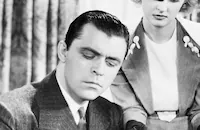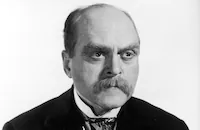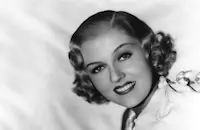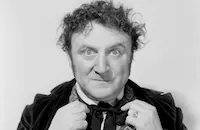Three on a Match

Brief Synopsis
Cast & Crew
Mervyn Leroy
Virginia Davis
Joan Blondell
Dawn O'day
Ann Dvorak
Betty Carse
Film Details
Technical Specs

Synopsis
Mary Keaton, Vivian Revere and Ruth Westcott are schoolgirls together. Ten years later, they run into each other by accident and decide to meet for lunch. Mary has become an actress after a few years in reform school, while Ruth is a secretary and Vivian has married wealthy lawyer Robert Kirkwood and has a son Junior. Although her life seems to be the most successful of the three, Vivian is unhappy and decides to take an ocean voyage with her son, leaving Robert at home. Just before the ship sails, Mary, who is saying goodbye to a friend, introduces Vivian to playboy gambler Michael Loftus. Vivian leaves the ship with him and goes into hiding from her husband. Ruth and Mary are disturbed by Vivian's lack of interest in her son, so Mary visits Robert to tell him where to find Junior. Robert becomes friendly with Mary and Ruth, who continue to visit Junior, and after his divorce is final, he and Mary are married. Meanwhile, Vivian has hit bottom. Michael has gambled away all their money, and when his check bounces, Ace, the owner of a club, demands cash. Michael tries to blackmail Robert for the money, but he throws Michael out. In desperation, Michael kidnaps Junior. While the police start a city-wide search, Vivian overhears plans to kill her child. She writes a note on her clothing with lipstick, revealing the location of the hideout, and then jumps to her death from the window.

Director

Mervyn Leroy
Cast
Virginia Davis

Joan Blondell

Dawn O'day

Ann Dvorak
Betty Carse

Bette Davis

Warren William

Lyle Talbot

Humphrey Bogart

Allen Jenkins

Edward Arnold

Frankie Darro

Glenda Farrell
Buster Phelps

Grant Mitchell

Sheila Terry
Clara Blandick
John Marston

Patricia Ellis

Hale Hamilton
Dick Brandon
Junior Johnson
Sidney Miller
Blanche Frederici

Hardie Albright
Spencer Charters
Ann Brody

Jack La Rue
Stanley Price
Harry Seymour
Mary Doran

Herman Bing
Selmer Jackson
Crew

Photo Collections
Videos
Movie Clip




Trailer
Film Details
Technical Specs

Articles
Three on a Match
Juggling multiple subplots within a sixty-four minute running time, Three on a Match follows the fates of three childhood friends, opening with a prologue set in 1919 and then reuniting the trio in 1931 where they have a reunion at a restaurant and vow to stay in touch. At this meeting, Mary (Joan Blondell), Ruth (Bette) and Vivian (Ann Dvorak) all share a match for cigarettes, laughing at the famous superstition that predicts a dire fate for the third one to share the match. In Vivian's case, however, it proves to be true. A bored society wife, Vivian abandons her lawyer husband Henry (Warren William), takes their son and runs off with Mike Loftus (Lyle Talbot), a notorious underworld figure. Eventually Henry divorces Vivian and wins custody of his son and, in an ironic turn of events, ends up marrying Mary and hiring Ruth as his son's nanny. Meanwhile, Vivian sinks deeper and deeper into poverty and despair until a final desperate act provides a grim but necessary resolution to the story.
In the screen foreword to Three on a Match, it is noted that the popular superstition "did not originate during World War I, where it was said that to hold a match burning long enough for three lights would attract enemy gun fire. It did originate with Ivar Kreuger, the Swedish match king, who wanted the world to use more matches. It is reported that the saying brings his companies $5,000,000 annually." By a coincidence, Warner Bros. would also release a film biography of Ivar Kreuger the same year as Three on a Match, also starring Warren William (in the title role).
Among the three leading actresses in Three on a Match, Warner Bros. studio head Jack Warner favored Ann Dvorak stating in his autobiography, My First Hundred Years in Hollywood, "I had seen her in Scarface [1932], and she had a dainty, unworldly quality that was rare in the actresses around Hollywood at the time. I brought her to Warner Brothers and in a five-year period she made nineteen pictures, including G-Men [1935], Three on a Match, Midnight Alibi [1934], and The Crowd Roars [1932]. Almost inevitably, she came down with the temperament disease, and when agents Myron Selznick and Charlie Feldman began double-crossing each other in a fight to get her, Ann ran away and took a slow boat to New York through the Panama Canal. I put her under suspension, and she never came back to the Burbank lot, which was too bad because she had a dazzling future until her quarreling agents snuffed it out." Dvorak could indeed have been a major star if she hadn't been plagued by bad luck and she's undeniably riveting as the doomed Vivian in Three on a Match, bringing a sense of genuine tragedy to the highly stylized soap opera proceedings.
In comparison, Joan Blondell and Bette Davis are merely supporting characters but both make the most of their limited on-screen opportunities. In her autobiography, The Lonely Life, Bette Davis wrote unfavorably of the experience, saying the studio "put me in a dull "B" picture called Three on a Match. My school friend Joan Blondell, Ann Dvorak and I were the unlucky trio, and Mervyn LeRoy was my next unsympathetic director. He kept talking of what a great dramatic star Joan was to become and I was glad for her; but his pointed references and indifference to me hardly encouraged me in my daily work. It seems that something in me created resistance in these men. There isn't the slightest doubt in my mind that they resented my background and my assurance. They were used to passive slates that they could scribble on...Madge in The Cabin in the Cotton [1932] was my first downright, forthright bitch and one would have thought that the role would have erased permanently the sweet, drab sister type that had plagued me since my arrival. And here I was, a stenographer. In an effort to humanize her, I would come up against the powers." Adding to Davis's frustration with her part were the unwanted advances of leading man Warren William who had pestered the actress on previous features. At least Mervyn LeRoy acknowledged some regret over his treatment of Davis in his autobiography, Mervyn LeRoy: Take One: "There was Three on a Match. They gave me three unknown girls in that one - Joan Blondell, Bette Davis and Ann Dvorak. I made a mistake when the picture was finished. I told an interviewer that Joan Blondell was going to be a big star, that Ann Dvorak had definite possibilities, but that I didn't think Bette Davis would make it. She's been cool to me ever since."
It would take another three years for Davis to prove the naysayers wrong but in 1934 she gave a breakout performance in Of Human Bondage and in 1935 won her first Best Actress Oscar® for Dangerous. On the other hand, Joan Blondell would win more prominent roles almost immediately following Three on a Match, scoring hits with major roles in Gold Diggers of 1933 and Dames (1934). It would take much longer for Humphrey Bogart, cast here as Mike's henchman "Harve the Mug" (one of his first gangster parts), to achieve leading man status at Warner Bros. His performance as the escaped convict Duke Mantee in The Petrified Forest (1936) brought him critical acclaim but he would have to wait until 1941 - when he appeared in both High Sierra and The Maltese Falcon - that the Bogie mystique would click with audiences.
Producer: Samuel Bischoff, Raymond Griffith, Darryl F. Zanuck
Director: Mervyn LeRoy
Screenplay: Lucien Hubbard, John Bright, Kubec Glasmon
Cinematography: Sol Polito
Film Editing: Ray Curtis
Art Direction: Robert M. Haas
Costume Design: Orry-Kelly
Cast: Ann Dvorak (Vivian Revere Kirkwood), Betty Davis (Ruth Wescott), Joan Blondell (Mary Keaton), Warren William (Robert Kirkwood), Lyle Talbot (Michael Loftus), Humphrey Bogart (Harve), Allen Jenkins (Dick), Edward Arnold (Ace), Anne Shirley (Vivian as a child), Virginia Davis (Mary as a child).
BW-64m. Closed captioning.
by Jeff Stafford

Three on a Match
Three on a Match - Bette Davis, Joan Blondell & Ann Dvorak in the 1932 Pre-Code Melodrama, THREE ON A MATCH
Disc 2 of the set begins with Warner's 1932 Three on a Match, one of the best of the lesser-seen Pre-Codes. Mervyn LeRoy's direction races through the eventful storyline in just 63 minutes. The basic story is similar to MGM's The Divorcee (also in the Volume 2 set) but couldn't be more different in approach. Warner's pro-Roosevelt, pro-labor house philosophy has a more egalitarian attitude. While MGM concentrates on glamour, Warner pictures have more vitality, and include content that MGM would shun as unforgivably vulgar.
An extended prologue (partly sourced from silent movies?) sketches the contrasting personalities of schoolgirls Mary Keaton, Vivian Revere and Ruth Wescott, starting in 1920. Bad girl Mary smokes and shows her bloomers to boys. Ruth becomes the valedictorian but must continue in secretarial school to make a living. Wealthy, chaste Vivian is voted 'most popular'. Among their schoolmates is a Jewish stereotype named Willie Goldberg, but the pianist at the commencement ceremony is a Japanese-American. Japanese-Americans in MGM movies are either gardeners or valets.
As an adult, Mary Keaton (Joan Blondell) serves a prison term, briefly sharing a scene with fellow prisoner Glenda Farrell before seeking work on the outside as a showgirl. Ruth (Bette Davis) is a low-paid clerk typist. Vivian (Ann Dvorak) marries Robert Kirkwood (Warren William) for money, bears a beautiful son but feels neglected and unsatisfied. She fantasizes about the torrid romance novels she read in her fancy finishing school. In 1930 Mary and Ruth gawk at Vivian's chauffeured limo. Who's happy and who's not? What does the future hold?
Plenty. Vivian asks for a vacation from domesticity and ends up taking her little boy Bobby and running away from her husband. Mary finds Viv shacked up with worthless playboy Michael Loftus (Lyle Talbot), neglecting the child and drinking herself into insensibility. Loftus gets in trouble with racketeers Ace and Harve (Edward Arnold & Humphrey Bogart) and Vivian adds cocaine to her vices. Mary and Ruth contrive to rescue Bobby, but Loftus blackmails Kirkwood over Mary's criminal background and eventually kidnaps the boy. Things get even worse when the gangsters move in. Now a wretched addict, Vivian realizes that her child's life may be in danger.
Three on a Match reverses the conventions of 'respectable' Hollywood fare. A naughty schoolgirl can mature into responsible adulthood despite a bad beginning, and a society princess who goes slumming finds that a good social standing doesn't give one a free pass. Vivian Kirkwood disintegrates in booze and drugs, a much more believable fate than that shown in MGM's The Divorcee. In that film, a carefree Norma Shearer takes a series of casual affairs and has a fine time, without material consequences.
The Warner film's treatment of the underworld is just as realistic. Gangster Edward Arnold is introduced in a giant close-up plucking his nose hairs (so much for glamour) and thug Humphrey Bogart accepts child murder as a cost of doing business. Warners' criminals are not handsome charmers, like Clark Gable in A Free Soul (also in this set).
The racy dialogue and severe situations have a real edge. Loftus picks up Vivian with the line, "You're a real woman, not one of those stuffed brassieres you see on Park Avenue." Little Bobby begs for bread and milk, but his mom's too strung out to give a hoot, or even raise herself from the sofa.
Everyone's great in this trim little picture, even the little child actor who plays Bobby. Ann Dvorak is terrific as the drug-addled Vivian, a character who would fit well in a 1970s movie. Bette Davis is just starting out and has little to do; we just stare at her and think, was she ever really that young? Joan Blondell fills the strongest female role. A fully formed Warners underdog character, Mary Keaton holds the moral high ground despite her tainted past. Humphrey Bogart's interpretation of the gangster is so modern that one wonders why Warners didn't leap to promote him. Bogie didn't must not have had the right look for 1932 -- no perfect profile like Chester Morris.
It's important to note that Three on a Match doesn't forgive Vivian's search for something beyond her appointed place in society. The message is that women must pretend to love their husbands no matter what -- wanting more is unnatural, and pursuing it is suicidal. Vivian's violent end is a dramatic expression of mother love.
Warners' Three on a Match is transferred in handsome B&W, with a strong soundtrack. English and French subtitles are provided along with an original trailer. Besides The Divorcee and A Free Soul, the TCM Archives: Forbidden Hollywood Volume 2 collection also contains two more Warners films, Female with Ruth Chatterton and Night Nurse with Barbara Stanwyck and Joan Blondell. Listed as an extra on disc three is Thou Shalt Not: Sex, Sin and Censorship in Pre-Code Hollywood. The entertaining docu chronicles the story of the Production Code, concentrating on the salacious details while only touching upon the Code's real effect. For over twenty-five years, a small body of overseers was able to limit what could be shown on American screens to a narrow range of behaviors and attitudes.
Three on a Match was remade several years later as Broadway Musketeers.
For more information about Three on a Match, visit Warner Video. To order Three on a Match (which is only available as part of the Forbidden Hollywood Vol. 2 set), go to TCM Shopping.
by Glenn Erickson
Three on a Match - Bette Davis, Joan Blondell & Ann Dvorak in the 1932 Pre-Code Melodrama, THREE ON A MATCH
Quotes
It must be a grand feeling to get everything you want.- Ruth Wescott
Trivia
Scenes of frenzy caused by the enactment of Prohibition were originally used in Public Enemy, The (1931).
Notes
The film for the film in the MPAA/PCA Collection at the AMPAS Library contains correspondence relating to the film's kidnapping scenes. In the wake of the Lindbergh kidnapping, censor boards were reluctant to pass a film that contained child kidnapping sequences because they felt that the public would resent such a film. Later, East coast censor boards agreed to pass this picture because the kidnappers in it are captured, but they subsequently entered into a "gentlemen's agreement" that the industry would not make any more pictures with kidnapping themes. The film was remade by Warner Bros. in 1938 as Broadway Musketeers.

Miscellaneous Notes
Released in United States 1996
Released in United States Fall October 29, 1932
Released in United States 1996 (Shown in New York City (American Museum of the Moving Image) as part of program "Warner Bros. Whiz: Mervyn Leroy in the 1930's" July 20 - August 4, 1996.)
Released in United States Fall October 29, 1932














